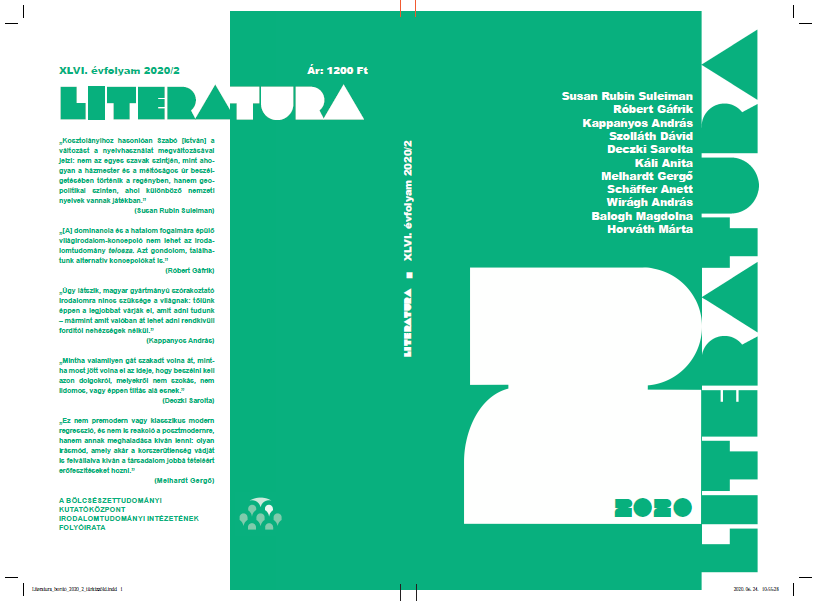A kelet-közép-európai disztópia valósága
Dragomán György: A fehér király
Abstract
The Reality of the East-Central European Dystopia: György Dragomán: The White King
In my paper I analyse two possible interpretations of György Dragomán’s The White King, which is not only a renowned novel in Hungarian literature, but it has also been translated to many languages including English, German, Turkish, Italian, Swedish and Chinese. The movie adaptation of the novel is an English–German–Swedish–Hungarian coproduction, produced in English, so it was aimed at a wide international audience. The movie is clearly a dystopian rewriting of the novel. The main question of the paper concerns the possibility of a dystopian interpretation of the novel, and the ambiguity of presenting itself both as a historical novel about the real struggles of the Ceaușescu era in Romania, and a dystopia about the terrors of totalitarian regimes in general, with only a very few equivocal references to a specific era. According to the latter interpretation The White King, just like its classic predecessors 1984, Brave New World etc. as well as the more contemporary dystopias, is deeply connected to the real political system, but it is not clearly set in it. I found that the novel uses many dystopian features: the everyman-type main character, the estranged and enclosed spaces, the identity crises of the main characters, the depiction of bodies and violence, the limited possibilities of communication (topics and facts that are not to be mentioned). The two interpretations (a novel set in Romania in the 1980s and a general dystopia) are deeply interconnected and delicately interwoven in the novel, and this dichotomy can be one of the reasons why the novel could gain popularity among foreign audiences that presumably do not know a lot about the East-Central European history.



